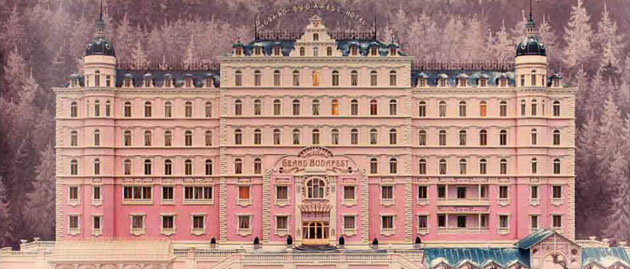Adam Stockhausen

AS: Watching the film you feel like you’re a witness to something real that wasn’t just fabricated.
AS: Like in the scene where Solomon is being hanged from the tree outside that plantation we knew that we were going to go three-hundred-sixty degrees around him and so that entire world was planned out. As you’re looking this way these things don’t stack up on each other, they’re stagger-set so that we can see the entire farm not helping him. And the trick was to get all that to happen without feeling the design of it.
AS: Are you on the set as you’re making a movie?
AS: I’m on the set every day. I start in the morning with the shooting company and I’m on set for the first few shots to make sure that everything is going well. Then at some point in the morning I jump forward and go to the set for the next day and I work on dressing that or finishing the paintwork or whatever it is. Then I’ll move forward again to the shops and look at how the construction is going for something that is going to shoot a week later… all the time taking pictures. Then I loop back to the set some time in the afternoon. Sometimes you’re bouncing back and forth three or four times. I generally try to end the day with the shooting company so that during lighting setups we can be looking at photos of what’s coming and discuss the work moving forward.
AS: Are you ever involved in the VFX side of things?
AS: When that work actually happens is in post-production when I’m no longer with the film. However, from the very beginning I try to design the full thing, complete with the extensions or whatever it’s going to be so we all know what the road map is. That creates a coherent look and helps with an efficient workflow. We’ll use sketches and 3D models. If you’re in an interior and you’re building the first twenty feet of it but the room’s meant to be seventy-five feet tall with all this architectural detail you’ll try to build the full thing into the 3D model, not just the first twenty feet. It helps when you’re framing up a shot on set to know what you’re going to be looking at.
AS: John Myhre talked about flying little cameras through physical models. Do you do those?
AS: Totally. A physical model is a really great tool. Physical space is not that easy to understand sometimes when you’re just representing it in two dimensions. Any way of pulling it into 3D helps the communication.
AS: Did you do scale models for Grand Budapest?
AS: We didn’t need to because the hotel was the big set and we were in the space. Our offices were upstairs. We’d just go downstairs and look at it! We’d bring samples downstairs and stand them up. We were doing it live.
We did the same kind of thing on Moonrise Kingdom. We’d done all the maps of the Bishop house interior and then built a 3D model of it and did little animatic mockups of the camera moves through the digital model. But then we were there together in Rhode Island and we would walk those stages together when they were in very rough shape. We’d stand up rough plywood walls with no paint and Bob would bring lenses and Wes would come and we’d march through the shots. We’d push a wall a little bit here and there and we actually ended up bringing the ceilings down. We had planned the ceilings at eight and a half feet and we actually brought them down to seven and a half feet.
This was one of my favorite films last year with some of my favorite actors. I love being able to read about how it all came to life through the production designer and thank you very much for creating a site where aspiring Production Design/Art Directors, such as myself, can come and learn from the best. Thank you!